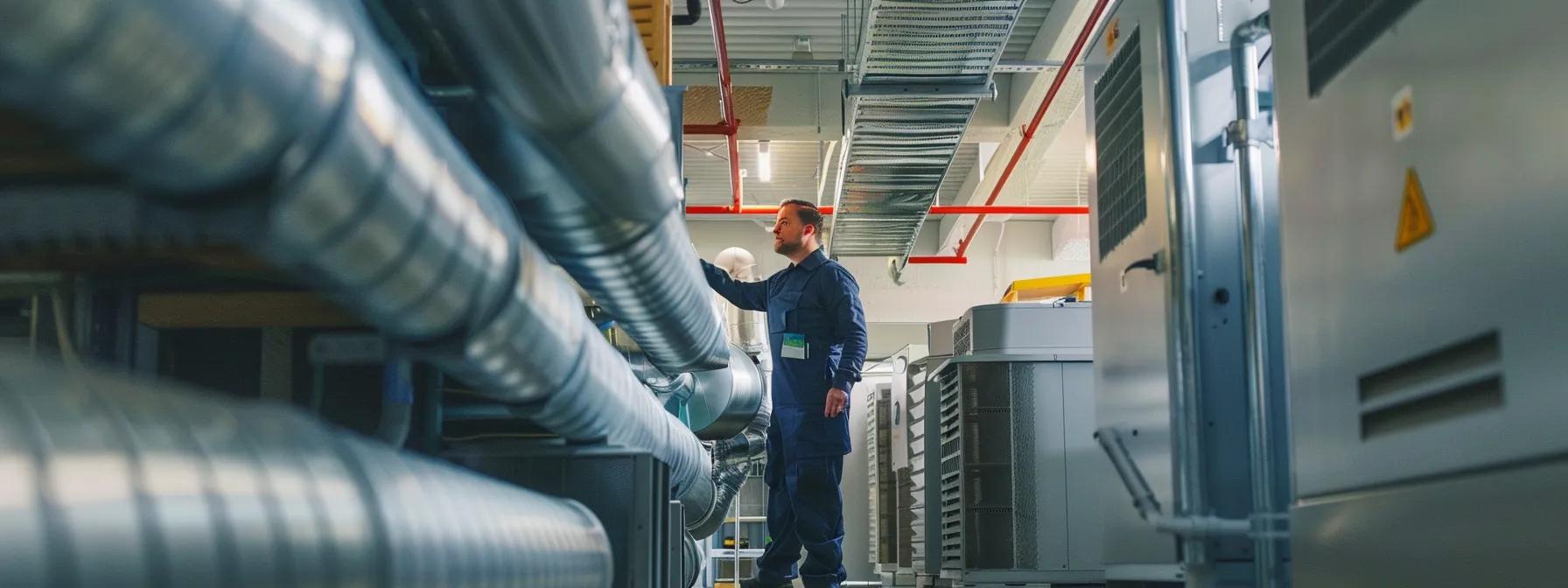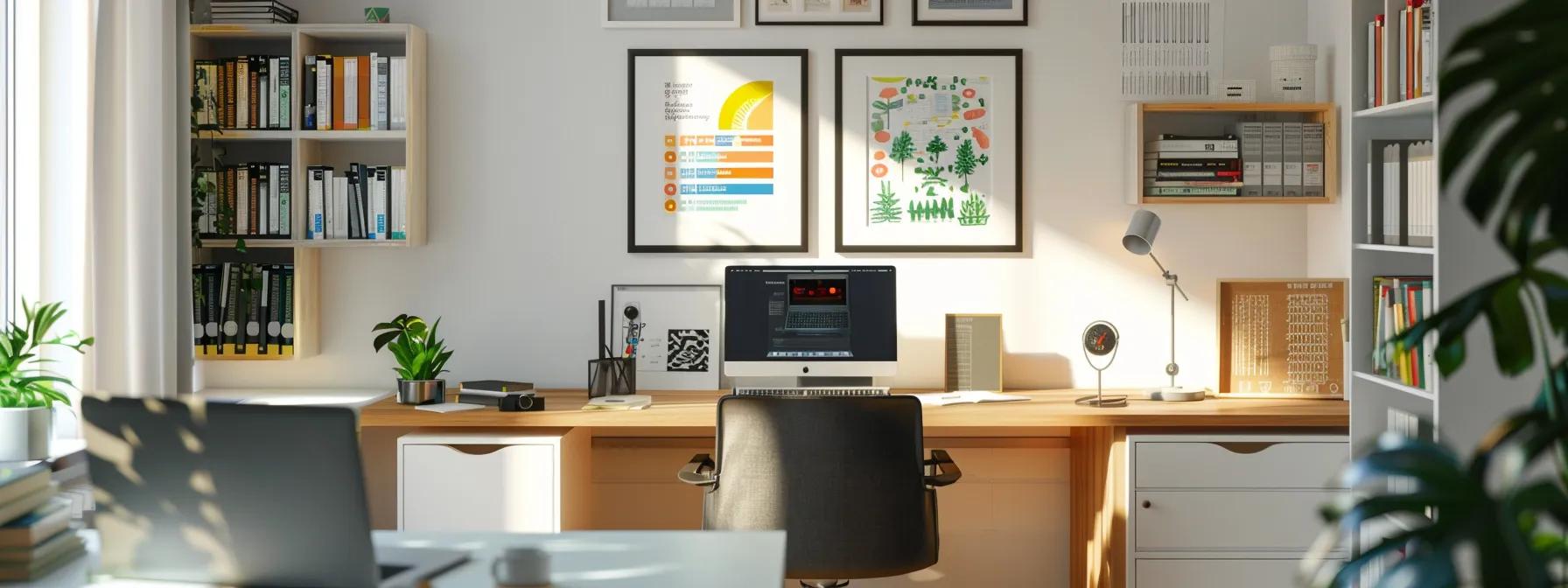Comprehensive Guide to Mold Prevention in HVAC Systems Explained

Comprehensive Guide to Mold Prevention in HVAC Systems
HVAC systems, including furnaces, play a crucial role in indoor air quality and energy efficiency, yet improper maintenance—often stemming from the absence of proper maintenance-plans—can lead to mold growth, which poses health risks and degrades equipment performance. Homeowners need to understand the causes and effective preventive measures to ensure that HVAC systems run reliably and safely, and many experts recommend that they request-estimate professional guidance. This comprehensive guide provides actionable strategies, supported by industry data and best practices, to help homeowners prevent mold growth in their HVAC systems.
Understand Mold Growth in HVAC Systems for Effective Prevention
Mold growth in HVAC systems is primarily driven by moisture accumulation, temperature fluctuations, and poor maintenance practices. Mold spores are everywhere and quickly multiply in the presence of moisture and organic debris. HVAC systems—with components such as air filters, ductwork, evaporator coils, and drain pans—offer ideal habitats if not properly maintained.
Mold often forms where condensation or leaks occur. Evaporator coils form condensation because of temperature differences, while dusty ductwork supplies nutrients for mold spores. Reduced airflow from clogged filters and ducts further increases moisture retention. Research indicates that even a 5% drop in airflow efficiency can increase the risk of localized moisture accumulation by up to 15%, accelerating mold growth.
Identify Common Sources of Moisture That Contribute to Mold
Moisture can enter HVAC systems through direct leaks, ambient humidity, or condensation. Key sources include roof leaks, poor insulation, blocked drainage systems, and high humidity conditions. For example, in humid summer months, elevated indoor humidity may overload the unit’s condensation capacity, while inefficient drainage in the condensate pan can leave stagnant water that promotes mold. Experts recommend maintaining indoor relative humidity between 30% and 50% to prevent condensation problems.
Recognize the Impact of Humidity on HVAC Systems’ Health
Controlled humidity is critical for HVAC performance and longevity. Excessive moisture not only accelerates mold and mildew growth but also causes premature corrosion of system components and reduces efficiency. Units operating above 60% relative humidity may face a higher risk of microbial contamination. Homeowners are advised to employ dehumidifiers or adjust HVAC settings to maintain ideal conditions.
Learn About the Various Types of Mold That Can Develop
Different molds, such as Cladosporium, Penicillium, and Aspergillus, can develop in HVAC systems. Cladosporium may cause minor respiratory irritation, while Penicillium and Aspergillus can trigger allergies and asthma. Identifying the specific type of mold helps in choosing the appropriate remediation strategy; for instance, aggressive treatment may be needed for Aspergillus, versus regular cleaning for less harmful species.
Implement Regular Maintenance for Mold Control

Routine maintenance is essential to control mold in HVAC systems. A structured maintenance plan keeps ducts and components free of moisture and debris. Key preventive measures include regular inspections, filter cleaning or replacement, and thorough cleaning of all components.
Schedule Routine Inspections for HVAC Components
Inspections are vital for early mold detection. HVAC components should be checked at least twice a year—before summer and before winter—to catch signs of moisture or mold. Technicians use moisture meters and thermal imaging to inspect evaporator coils, ductwork, condensate pans, and air filters. Regular professional inspections can reduce mold-related issues by up to 30%, contributing to a safer indoor environment.
Clean Air Filters Frequently to Maintain Ideal Airflow
Air filters are the primary defense against airborne mold spores. Dirty or clogged filters reduce airflow and promote moisture buildup. Homeowners should replace or clean filters every 1 to 3 months, depending on usage and seasonal conditions. High-efficiency filters trap smaller particles, including mold spores. Systems with HEPA-certified filters have shown up to an 80% reduction in mold spore concentration compared to those with standard filters.
Assess and Clean Drain Pans to Prevent Standing Water
The condensate drain pan collects water during dehumidification and must be kept clear to prevent stagnation. Regular inspection and cleaning—at least semi-annually—help remove blockages and prevent mold-friendly environments. A mild detergent solution can be used to clean small blockages, protecting both the HVAC unit and its components from water damage.
Optimize Humidity Levels to Deter Mold Formation
Effective humidity control is key to preventing mold. Optimizing indoor humidity not only improves comfort but also extends system lifespan.
Utilize Dehumidifiers for Optimal Indoor Humidity Control
Dehumidifiers reduce excess indoor moisture, lessening the chance for mold. These devices can work as standalone units or be integrated into HVAC systems. Studies show dehumidifiers can lower indoor humidity by 10–15% within hours. In humid regions, portable dehumidifiers or moisture-sensing HVAC systems are recommended.
Monitor Humidity Levels With Reliable Hygrometers
Accurate humidity measurement helps maintain conditions that deter mold growth. Affordable hygrometers provide real-time data. It is advisable to place them near HVAC vents to monitor and maintain humidity between 30% and 50%. Smart hygrometers can also automate adjustments for consistent indoor air quality.
Adjust HVAC Settings Seasonally to Balance Moisture Levels
Seasonal changes affect humidity, so HVAC settings may need adjustment. In summer, increasing cooling and dehumidification helps lower moisture, while in winter, moderation in heating prevents over-drying. Many modern systems include programmable thermostats, which can reduce energy consumption by about 15% while balancing moisture levels. Regular recalibration by HVAC professionals is recommended.
Upgrade Air Filtration Systems for Improved Air Quality

Enhanced air filtration plays a significant role in mold prevention by capturing mold spores and pollutants before they settle.
Consider HEPA Filters for Efficient Mold Filtration
HEPA filters offer superior performance by capturing 99.97% of airborne particles as small as 0.3 microns, including mold spores. Installing HEPA filters can greatly reduce the spores entering the system and lower mold risks. Their use has been linked to a significant reduction in allergen levels and improved respiratory health.
Understand MERV Ratings to Choose the Right Filter
MERV ratings indicate a filter’s effectiveness in capturing airborne particles. Filters with ratings between 11 and 13 are ideal for balancing efficiency and airflow. This allows homeowners to maintain indoor air quality without hampering system performance. Many energy audits suggest a filter upgrade when mold or other contaminants become a recurrent problem.
Replace Filters on a Regular Schedule to Ensure Purity
Even high-quality filters lose effectiveness as dust and debris accumulate. Homeowners should follow manufacturer recommendations and replace filters every 1 to 3 months. Regular replacement prevents mold spores from establishing and helps the HVAC system run efficiently, reducing overall energy consumption.
Seal Ductwork Properly to Prevent Mold Spread
Well-sealed ductwork prevents moisture ingress and helps maintain consistent indoor air delivery, reducing mold potential.
Insulate Ductwork to Minimize Condensation Risk
Proper insulation of ductwork not only enhances energy efficiency but also stabilizes temperatures, reducing condensation risks. Materials like fiberglass or foam can cut condensation by up to 50% compared to uninsulated ducts. Consultation with HVAC professionals for insulation upgrades is advisable.
Inspect and Repair Leaks to Maintain Duct Integrity
Even small leaks can cause significant moisture buildup over time. Annual duct inspections are essential to identify and repair leaks using materials such as mastic sealant or metal tape. Sealing leaks improves overall system performance and can reduce particulate infiltration by around 25%.
Regularly Clean Ducts to Remove Dust and Allergens
Dust and pollen can accumulate in ducts and provide nutrients for mold. Professional duct cleaning every 3 to 5 years, along with periodic HEPA-filter vacuuming, helps remove these contaminants, promoting healthier indoor air and extending system longevity.
Educate Occupants on Mold Prevention Strategies

Educating homeowners and occupants on mold prevention leads to faster recognition and correction of moisture issues, fostering a healthier home environment.
Share Best Practices for Humidity Management Indoors
Occupants should use exhaust fans, ensure windows are sealed, and monitor indoor humidity regularly. Educational materials provided by homeowners’ associations or HVAC service providers can offer guidelines for maintaining humidity between 30% and 50% and practical DIY solutions for minor moisture issues.
Inform About Signs of Mold Growth in HVAC Systems
Early detection of mold is crucial. Common signs include discoloration near ducts, musty odors around vents, and increased allergy symptoms. Providing checklists and visual guides helps occupants quickly identify potential issues, which can reduce remediation costs by facilitating early intervention.
Encourage Timely Reporting of Moisture Issues to Maintenance
Prompt reporting of moisture, dampness, or unusual odors can prevent expensive repairs and system shutdowns. Establishing a direct hotline or online reporting system encourages quick communication between occupants and maintenance personnel, ensuring fast resolution of issues.
Table: HVAC Mold Prevention Strategies Overview
Before examining this table, note that a variety of actionable methods exist to minimize mold growth. The table below summarizes key HVAC maintenance actions alongside their effectiveness and user benefits.
This table ties together the core prevention strategies, helping homeowners visualize the link between regular maintenance efforts and tangible benefits in system performance and reduced mold risk.
Final Thoughts
Preventing mold in HVAC systems is essential for maintaining indoor air quality, health, and system longevity. Regular maintenance, proper humidity control, enhanced air filtration, well-sealed ductwork, and occupant education together form a proactive defense against mold and mildew. By integrating these practices, homeowners can reduce contamination risk, ensure efficient performance, and create a healthier living environment. Regular inspections, timely filter and duct cleaning, and active monitoring of indoor conditions not only protect health but also prevent costly repairs. Ultimately, a well-maintained HVAC system enhances comfort and adheres to industry best practices.
Frequently Asked Questions
Q: What causes mold to develop in HVAC systems? A: Mold develops primarily due to moisture from condensation, leaks, and high ambient humidity, which provide ideal conditions for spores to multiply.
Q: How often should HVAC filters be replaced or cleaned to prevent mold? A: Filters should be replaced or cleaned every 1 to 3 months, depending on use and environmental conditions, to maintain proper airflow and reduce moisture.
Q: What are some common signs of mold growth in an HVAC system? A: Signs include visible mold on ducts or vents, a musty odor near the system, and increased allergy symptoms among occupants.
Q: Can a dehumidifier help in preventing mold in HVAC systems? A: Yes, dehumidifiers reduce indoor humidity, minimizing condensation and the moisture necessary for mold growth.
Q: Why is regular duct sealing and insulation important in mold prevention? A: Proper sealing and insulation prevent unwanted moisture and condensation on duct surfaces, reducing the likelihood of mold growth and improving efficiency.
Q: What role does occupant education play in mold prevention for HVAC systems? A: Educating occupants on proper humidity management, early mold signs, and maintenance reporting leads to quicker detection and remediation, reducing overall mold risk.
Q: How much of an impact does routine maintenance have on preventing mold growth? A: Regular maintenance—including inspections, filter changes, and duct cleaning—can reduce mold risk by up to 30–50%, making it a key long-term investment.
Q: Are HEPA filters necessary for all HVAC systems? A: While not required for every system, HEPA filters are highly effective at capturing mold spores and are especially useful in environments with high allergen levels.
Q: How can seasonal adjustments in HVAC settings deter mold formation? A: Adjusting settings seasonally helps balance moisture levels, reducing condensation in humid periods and saving energy during drier seasons.
Q: What is the recommended indoor humidity level to minimize mold risk? A: Maintaining indoor humidity between 30% and 50% minimizes condensation and creates a less hospitable environment for mold.
By understanding and implementing these strategies, homeowners can ensure their HVAC systems perform optimally while maintaining healthy indoor air quality.